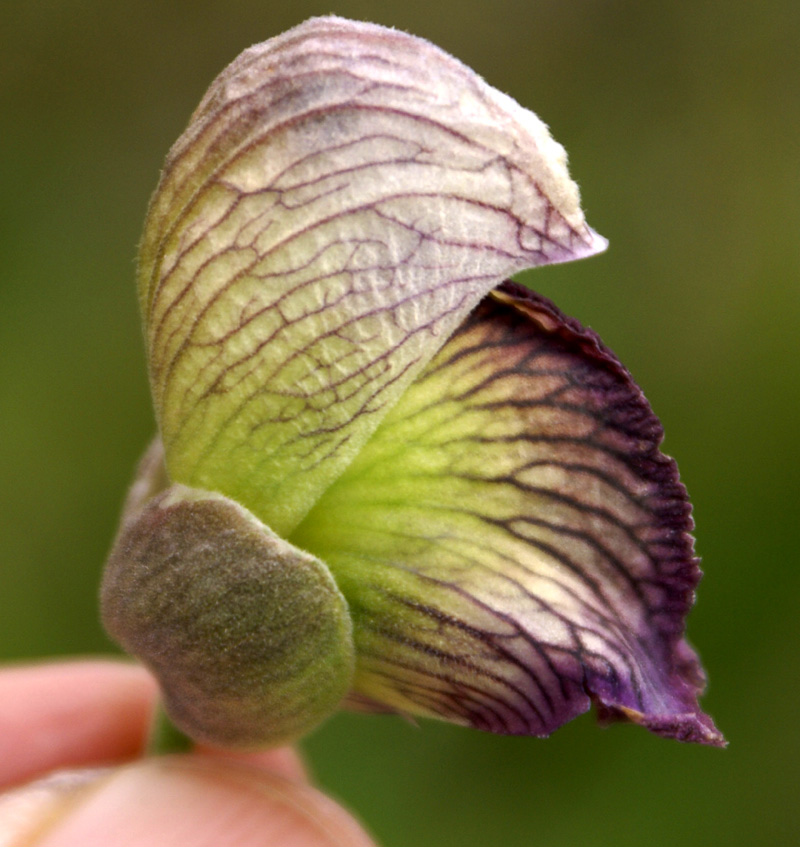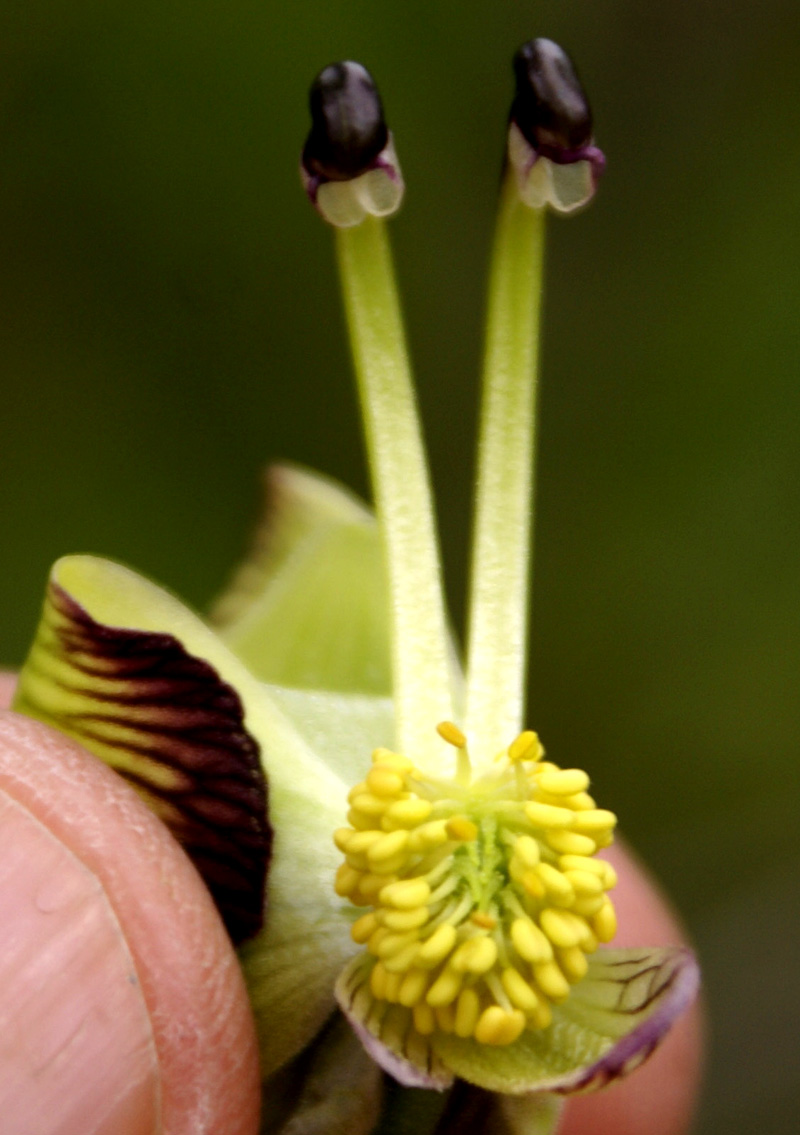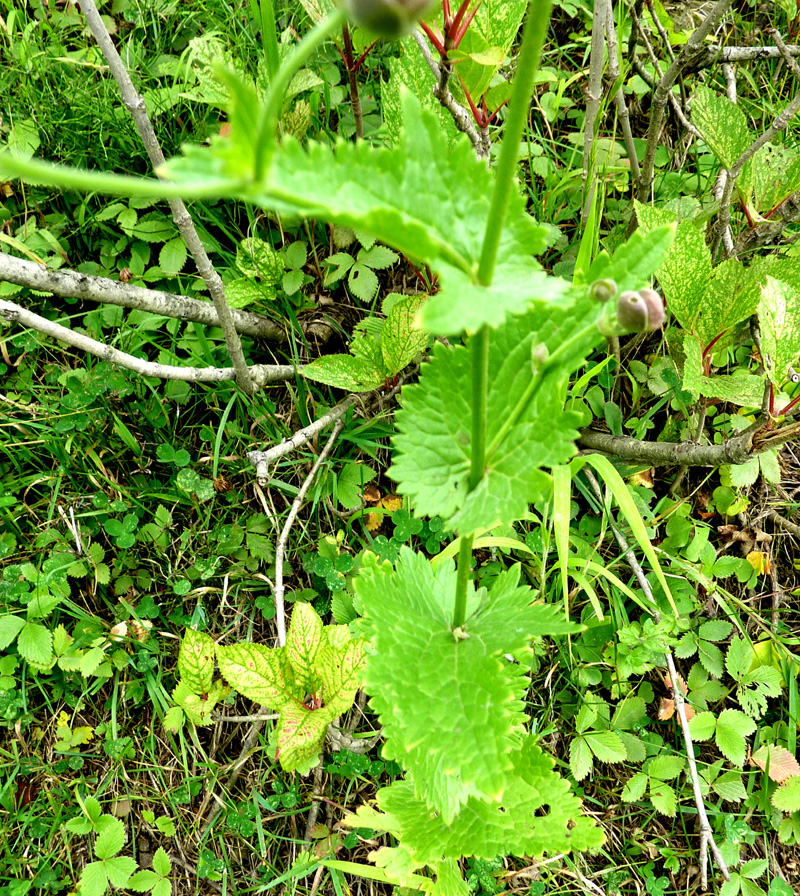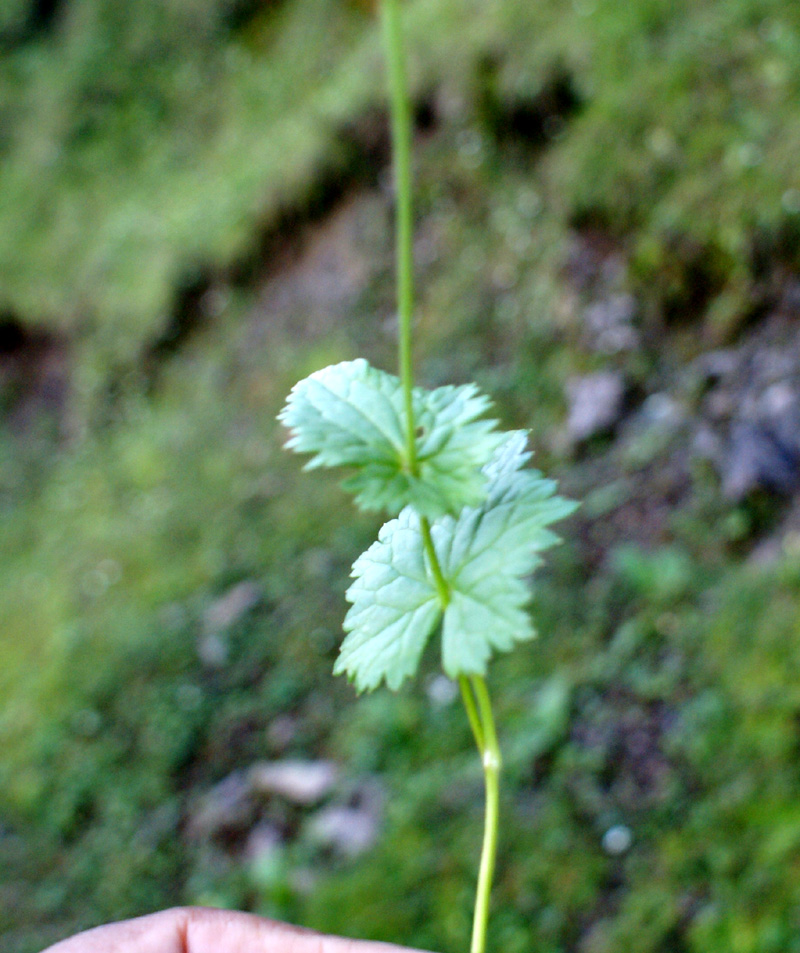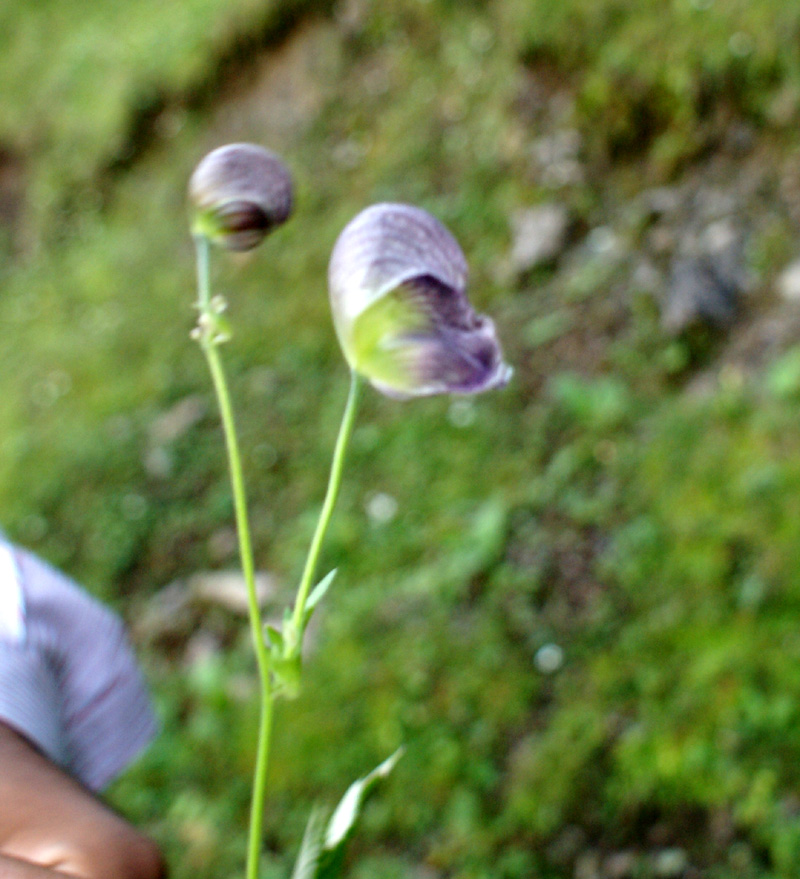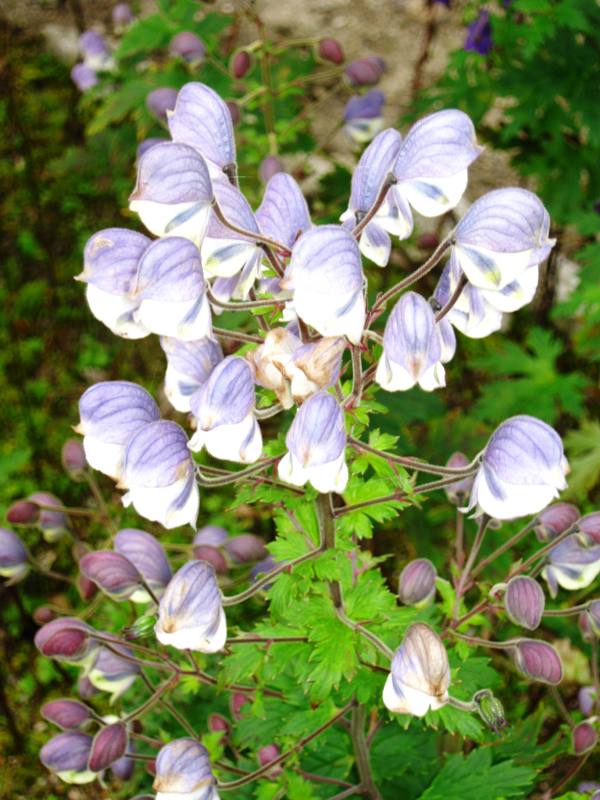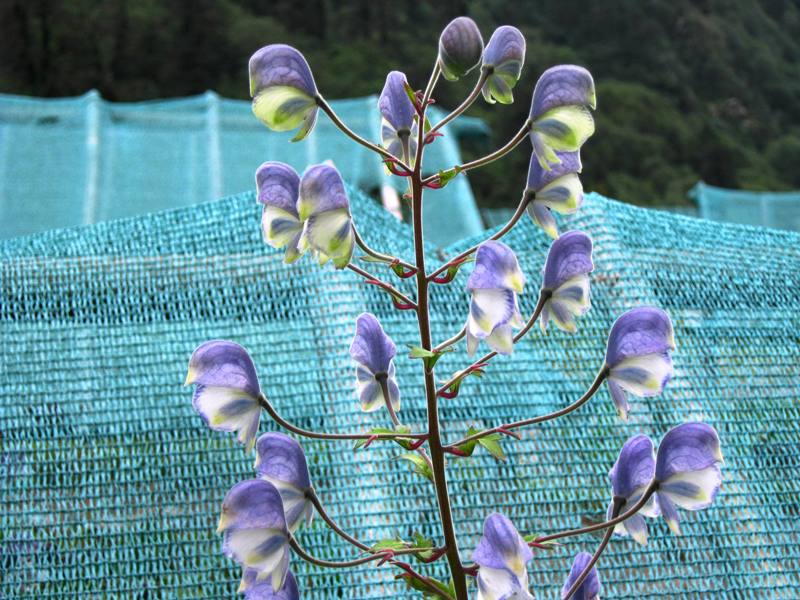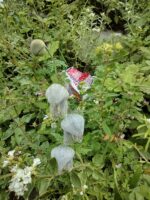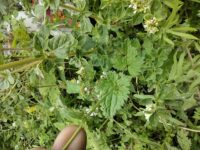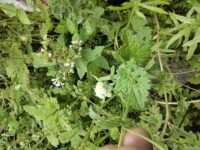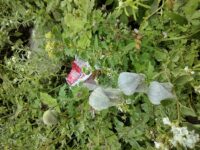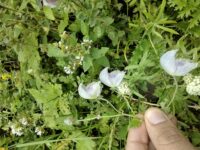|
IUCN Red List Status: Endangered (EN)
. Aconitum heterophyllum Wall. ex Royle, Ill. Bot. Himal. Mts. 56, t. 13 1834. (Syn: Aconitum atees Royle; Aconitum cordatum Royle; Aconitum heterophyllum var. roylei L.B.Chaudhary & R.R.Rao; Aconitum ovatum Lindl.; Aconitum petiolare Royle ex Stapf); .
Common names: Atis root, Ativisha (Sans.), Atis (Hindi)
. Tuberous herb up to 90 cm tall, simple or branched from base; lower leaves petiolate, rounded to oval, cordate at base, shallowly lobed or toothed, upper stem-clasping, sharply toothed; flowers 3-4 cm long, in loose raceme or subpaniculate, sepals dull green-purple or dull green-blue, with dark purple veins, upper one pointed in front with rounded top, lateral as long; petals (nectaries) two with about 16-18 mm long claw and 4 mm long hood; follicles 5, 15-20 mm long, slightly downy or glabrous. . Tuberous roots yield alkaloids atisine, heteratisne, atidine, hetidine, etc., roots used for hysteria, throat infections, dyspepsia and vomiting, abdominal pain and diabetes. .
Aconitum heterophyllum from Gulmarg, Kashmir:
Aconitum heterophyllum Wall.ex Royle, Illustr. Bot. Himal. Mount. 56.t.13. 1833 Common names: Atis root, Ativisha (Sans.), Atis (Hindi)
Tuberous herb up to 90 cm tall, simple or branched from base; lower leaves petiolate, rounded to oval, cordate at base, shallowly lobed or toothed, upper stem-clasping, sharply toothed; flowers 3-4 cm long, in loose raceme or subpaniculate, sepals dull green-purple or dull green-blue, with dark purple veins, upper one pointed in front with rounded top, lateral as long; petals (nectaries) two with about 16-18 mm long claw and 4 mm long hood; follicles 5, 15-20 mm long, slightly downy or glabrous.
Tuberous roots yield alkaloids atisine, heteratisne, atidine, hetidine, etc., roots used for hysteria, throat infections, dyspepsia and vomiting, abdominal pain and diabetes. aconitum of garden variety gets blue flowers… Correct Nepali Name : अतिस Flora of Chakrata: Aconitum sp from Deovan Chakrata: Root of Aconitum is toxic. So if this is the indigenous himalyan Aconitum.. it is most likely Vatsanabha or Halahal (as in Halahal vish) of Ayurved … I think it is ateesh another synonym of vatsanabha , I think… It is a shade loving plant. Aconite is a Homeopathic medicine also. . My Flora Picture of the Year: Aconitum heterophyllum from Gulmarg Kashmir: Two years back I had uploaded an insignificant flower of Bauhinia roxburghiana that looked great after close up was seen under magnification. This year while waiting for Cable car tickets at Gulmarg I strolled into the forest to find an interesting looking, though not very attractive plant, that I knew was Aconitum. Only after I sat to process my photographs and I identified it that I was impressed by great architecture of its dull looking flowers, and subsequently identified it as Aconitum heterophyllum Wall. ex Royle, the Atis Root plant and a very important medicinal plant.
Roots yield a number of alkaloids such as atisine, heteratisine, histisine, heterophyllisine, heterophylline, heterophyllidine, atidine, hetidine, benzotheteratisine, F-dihydroatisine, and hetisinone. Plant is considered as valuable febrifuge and bitter tonic. Roots are also used for hysteria, throat infections, dyspepsia and vomiting, abdominal pain and diabetes.
It purifies blood and also acts as anti-inflammatory agent. It decreases fever and also cures malarial fever.
I am uploading two photographs of this useful plant. Incomparable close up Sir. both the images are really eye catching. This is also my passion on how to take more snaps of common plants through my lens which i learn from you. Agreed with …, Picture of the Year.
Sharing some plants of my recent trip to Bhadarwah high altitudes J&K.
Bot. name: Aconitum heterophyllum
Family: Ranunculaceae
Location: Bhadarwah J&K.
Altitude: 3300 meters asl
Date: 16th August 2012 . Ranunculaceae Fortnight: Aconitum heterophyllum from Kashmir-GSJAN02 : 3 posts by 3 authors. Attachments (4).
Aconitum heterophyllum Wall.ex Royle, Illustr. Bot. Himal. Mount. 56.t.13. 1833 Common names: Atis root, Stivisha (Sans.), Atis (Hindi)
Tuberous herb up to 90 cm tall, simple or branched from base; lower leaves petiolate, rounded to oval, cordate at base, shallowly lobed or toothed, upper stem-clasping, sharply toothed; flowers 3-4 cm long, in loose raceme or subpaniculate, sepals dull green-purple or dull green-blue, with dark purple veins, upper one pointed in front with rounded top, lateral as long; petals (nectaries) two with about 16-18 mm long claw and 4 mm long hood; follicles 5, 15-20 mm long, slightly downy or glabrous.
Tuberous roots yield alkaloids atisine, heteratisne, atidine, hetidine, etc., roots used for hysteria, throat infections, dyspepsia and vomiting, abdominal pain and diabetes. Ranunculaceae Fortnight: Aconitum heterophyllum from Chakrata-GSJAN03 : 7 posts by 5 authors. Attachments (2).
Aconitum heterophyllum Wall.ex Royle, Illustr. Bot. Himal. Mount. 56.t.13. 1833
Photographed from Budher Caves road Chakrata Enjoying your Aconitums which are not observed here in Maharashtra. beautiful upload Aconitum heterophyllum (Ranunc.) for ID – Kynangosla, East Sikkim : 4 posts by 2 authors. Attachments (8)
ID Please. In my knowledge you are right that is A. heterophyllum PM 1-08-2018. is it Aconitum heterophyllum?? : 4 posts by 3 authors. Attachments (2) Habit- Small Herb
Habitat- wild, found growing in a hilly moist place near Hamirpur H.P. at the height of ~800m 29-07-2018 According to the leaves it looks like. To check with the flowers…
Sorry for the poor quality of images
Habit – Small herb
Habitat – on a steep slope
Location – Mani Mahesh Trek, Near Gaurikund, Chamba, Himachal Pradesh
Altitude – 3200 m asl
only 3-4 individuals were encountered as the area experienced frequent landslide
Date – 25-08-2022 Yes ! . References:
|
Aconitum heterophyllum
Updated on December 24, 2024

